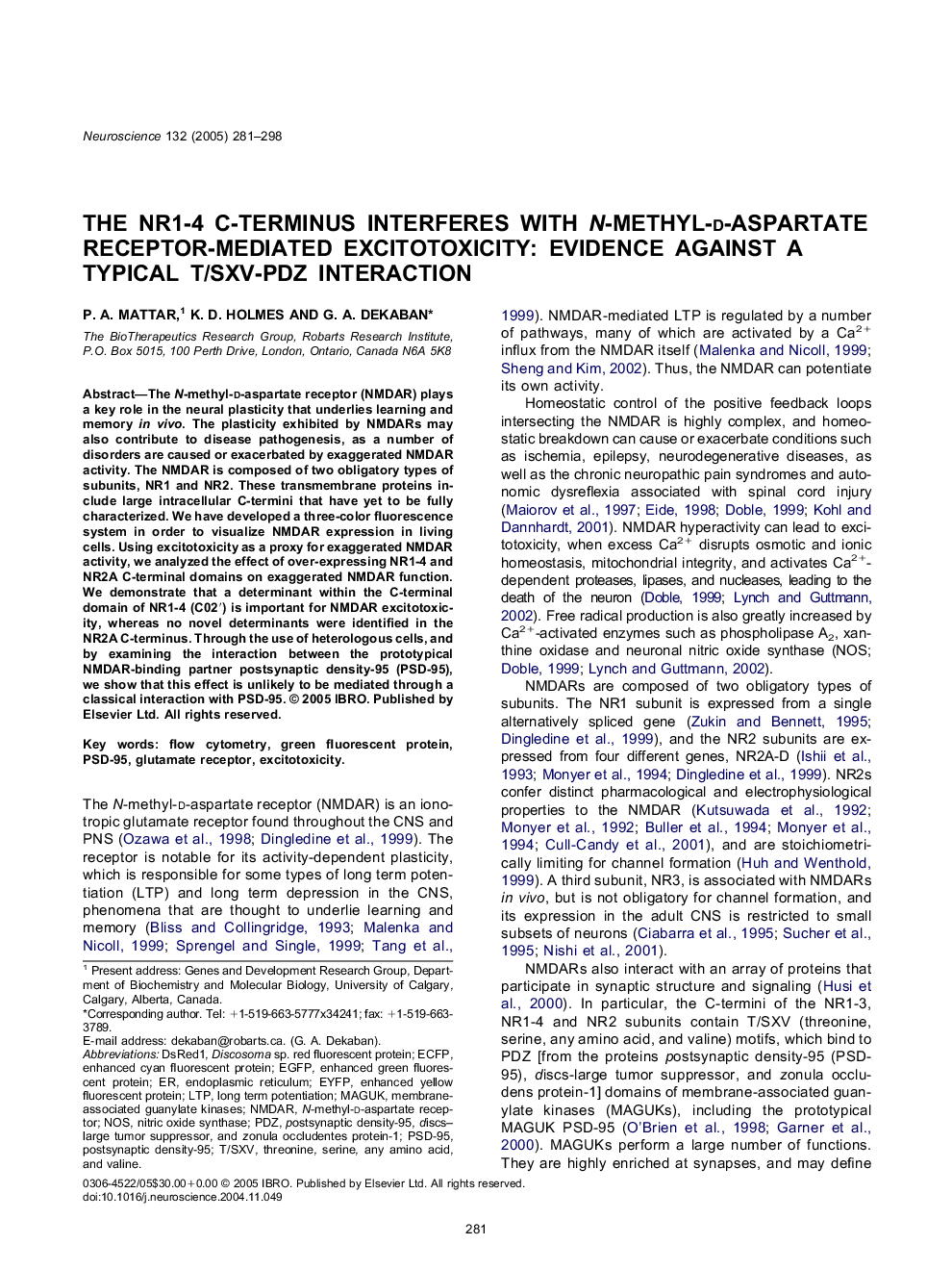| Article ID | Journal | Published Year | Pages | File Type |
|---|---|---|---|---|
| 9425639 | Neuroscience | 2005 | 18 Pages |
Abstract
The N-methyl-d-aspartate receptor (NMDAR) plays a key role in the neural plasticity that underlies learning and memory in vivo. The plasticity exhibited by NMDARs may also contribute to disease pathogenesis, as a number of disorders are caused or exacerbated by exaggerated NMDAR activity. The NMDAR is composed of two obligatory types of subunits, NR1 and NR2. These transmembrane proteins include large intracellular C-termini that have yet to be fully characterized. We have developed a three-color fluorescence system in order to visualize NMDAR expression in living cells. Using excitotoxicity as a proxy for exaggerated NMDAR activity, we analyzed the effect of over-expressing NR1-4 and NR2A C-terminal domains on exaggerated NMDAR function. We demonstrate that a determinant within the C-terminal domain of NR1-4 (C02â²) is important for NMDAR excitotoxicity, whereas no novel determinants were identified in the NR2A C-terminus. Through the use of heterologous cells, and by examining the interaction between the prototypical NMDAR-binding partner postsynaptic density-95 (PSD-95), we show that this effect is unlikely to be mediated through a classical interaction with PSD-95.
Keywords
PSD-95Discosoma sp. Red fluorescent proteinmembrane-associated guanylate kinasesECFPEYFPPDZNMDARNOSeGFPMAGUKenhanced cyan fluorescent proteinexcitotoxicitypostsynaptic density-95long term potentiationLTPendoplasmic reticulumFlow cytometrynitric oxide synthaseenhanced yellow fluorescent proteingreen fluorescent proteinenhanced green fluorescent proteinN-methyl-d-aspartate receptorGlutamate receptor
Related Topics
Life Sciences
Neuroscience
Neuroscience (General)
Authors
P.A. Mattar, K.D. Holmes, G.A. Dekaban,
